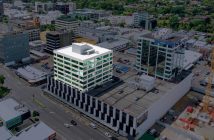CBD occupier mix creates resilience against Covid-19
We have just released our latest CBD Office Occupancy Survey in conjunction with CBRE Research, which is effective to 30 June.
Key points:
- Total office accommodation in the Hamilton CBD is currently 261,300 sqm.
- Higher quality Grade A and B now accounts for 30 percent of total office stock (up significantly from 15 percent in 2011).
- Grade C makes up 36 percent of the total office stock (down only slightly from 39 percent in 2011).
- Lower quality Grades D and E now accounts for only 34 percent of total office stock (down significantly from 47 percent in 2011).
Overall, however, vacancy increased to 7.5 percent in June 2020, up from 6.5 percent in December 2019. Grade A experienced the largest change in vacancy, increasing from its post 2013 historic low of 2.1 percent to 5.9 percent in the six-month period due to three spaces becoming available earlier in the year. At this stage, this figure is expected to decrease over the next six months.
Grade E vacancy sits at 20.5 percent, a 0.2 percent increase from December 2019. This grade remains increasingly difficult to tenant, with greater emphasis now being on refurbishment and/or repositioning to alternative uses. 14, 12 and now 10 Garden Place is a prime example of an asset that has been refurbished, moving from E Grade to B Grade.
In terms of new developments in the pipeline, there are several notable projects. The first being Tristram Precinct on the corner of Bryce, Ward and Tristram Streets, which is currently under construction with a completion date of mid 2021. Consisting of circa 15,000sqm of high quality office space over 3 levels, this will be the new home for the headquarters of the Waikato Regional Council and also WSP (Opus International), with one remaining tenancy still potentially available.
The second major development is Union Square, which is located on the corner of Anglesea and Hood Streets. Transformational for Hamilton, there are five carefully curated and unique buildings to be developed on this central city site with a total combined floor area in excess of 30,000sqm. Floor plates range from 650sqm to 1,500sqm to meet any workplace environment. Fully tenanted, Rabobank are moving their head office to the first five-level building situated on the corner, with the additional floors being secured by AA Insurance. Currently under construction, completion is due late 2021.
The third major development is the announcement of a new $50 million complex in the CBD by Tainui Group Holdings (TGH). Split over four-levels and across three pavilions, the 10,000 sqm environmentally-friendly complex will be home to more than 650 ACC staff. In addition to the building’s 4.5 Green Star rating. Completion is due in late 2022 where ACC will occupy the building on a new 15-year lease.
Impact of Covid-19?
The Covid environment impacts on future work patterns are yet to fully arise in the Hamilton office market; however, the occupier mix means that resilience is expected. The H1 2020 survey showed that net absorption has been strong. This move has changed the occupier mix by boosting Health Care and Social Assistance to a level comparable to Public Administration and Safety occupiers, at circa 40,000 sqm each. At a national level, space requirement from occupiers in these two categories have been growing during the pandemic, which has piqued investor interest in assets occupied by ‘essential’ businesses.
Hamilton thus far appears to have shown far more resilience than the likes of Auckland and Wellington, where significant amounts of quality sub-lease space has and is continuing to come to market. At this stage we have had little or no quality office space come available for sub-lease, although there are indications that over the coming months a limited quantity of such space may be unearthed. Not having a significant reliance on large corporate occupiers or the government sector, as is the case in Auckland and Wellington, suggests that Hamilton is likely to be somewhat sheltered in this regard. There should also be a corresponding benefit for retailers.
There is increasingly a responsibility for building owners and business owners to provide a quality workplace experience, both in terms of the physical building and its location in relation to amenities, as well as the actual work environment and culture. If this can be achieved successfully, the work from home model will likely be short lived, although it has become apparent that workers are seeking flexibility in wanting the option to work outside the office when and where required. International research is suggesting that there are significant benefits in terms of learning by osmosis, social interaction and collaboration of ideas, in the right physical workplace situation.






